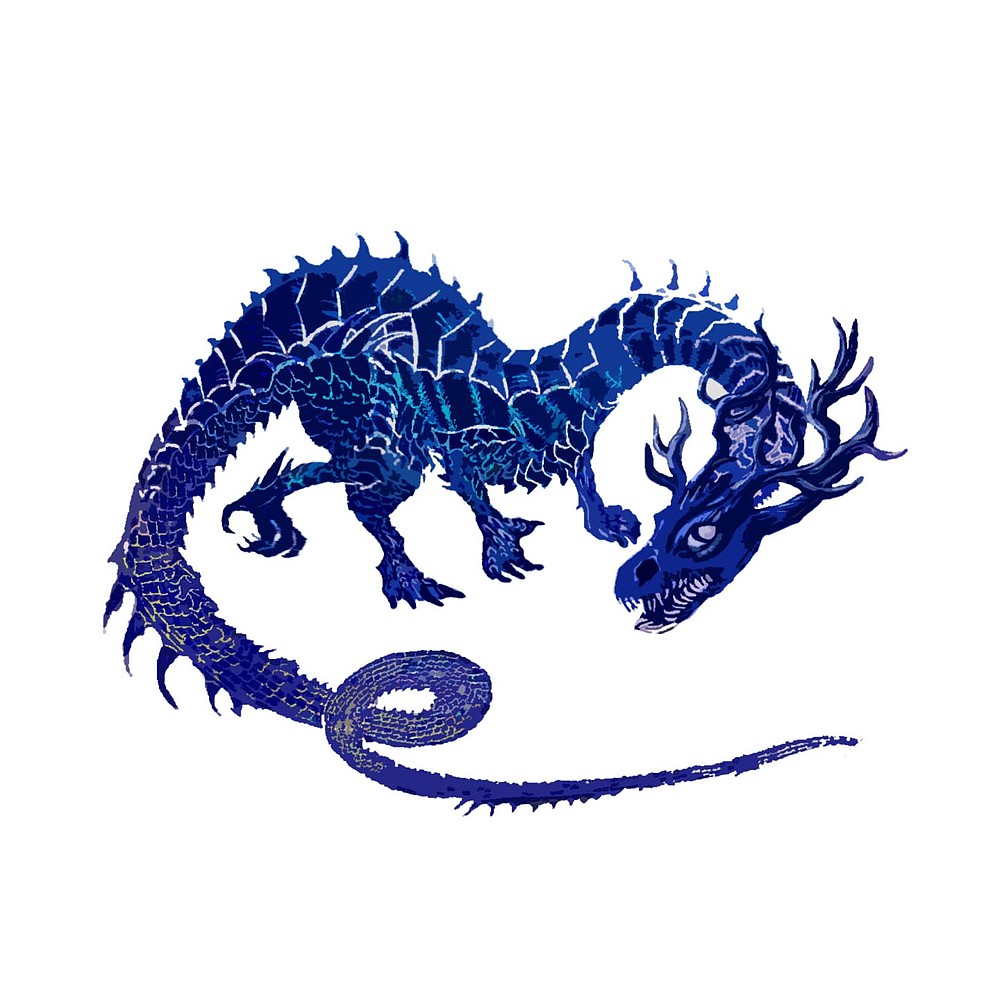
Yggdrasil is the old Nordic World Tree, a symbol of the living universe. This tree unifies the worlds of Asgard, Midgard and Niflheim. Each of this worlds has three sub-realms, therefore, Norse cosmogony talks of nine worlds, only one of them inhabit by humans.
In this unified universe, the sky is held up by four dwarfs. The sun and moon are chased by two wolves in an eternal cycle of day and night. The earth is encircled by the World Serpent—Jörmungandr—biting its own tail. Tree roots sustain the Yggdrasil. One root is placed over Niflheimr, the World of Mist, and the dragon Níðhöggr gnaws it from beneath, in the Lower World.
The Níðhöggr, who lives trapped by the roots, at the lowest level of the underworld, is described as a horrific monster that, at times tired of root, chews on the corpses of the inhabitants of Náströnd: those guilty of murder, adultery, and oath-breaking.
Níðhöggr, often referred as "the Dread Biter" only knows of light and life because a squirrel, by the of name Ratatoskr, darts up and down about the Yggdrasil's trunk bearing spiteful tales between an eagle and the underworld monster.
In pagan folklore, the Níðhöggr finally making his way to the surface was an indication that the final battle between the gods and giants had began. In one especially significant Old Norse poem—The Poetic Edda. Völuspá, stanza 66 Insight of the Seeress—Níðhöggr is described as flying out from beneath Yggdrasil during Ragnarok to aid the giants in battle, hence bringing about the downfall of the universe.
At the arrival of Christianity, the myth of Níðhöggr was quickly assimilated. While other mythological beast were soon forgotten to died of abandonment, by depicting Níðhöggr steadily making his way through the root, it became a metaphor of the steady conquest of Christianity over paganism. Likewise, Níðhöggr was soon equated to the serpent from the Garden of Eden. As once the underworld dragon feasted on the corps of the sinners; then he became the constant reminder that Christianity—and Christ's sacrifice—is a necessary part of northern life now.
References
-Robertson, A.E., 2006. Níðhöggr and the Miðgarðsormr: facets of Old Norse mythic consciousness and mentality revealed through the theme of order and chaos (Master's thesis).
-Sommarström, B., 1987. Ethnoastronomical perspectives on Saami religion. Scripta Instituti Donneriani Aboensis, 12, pp.211-250.